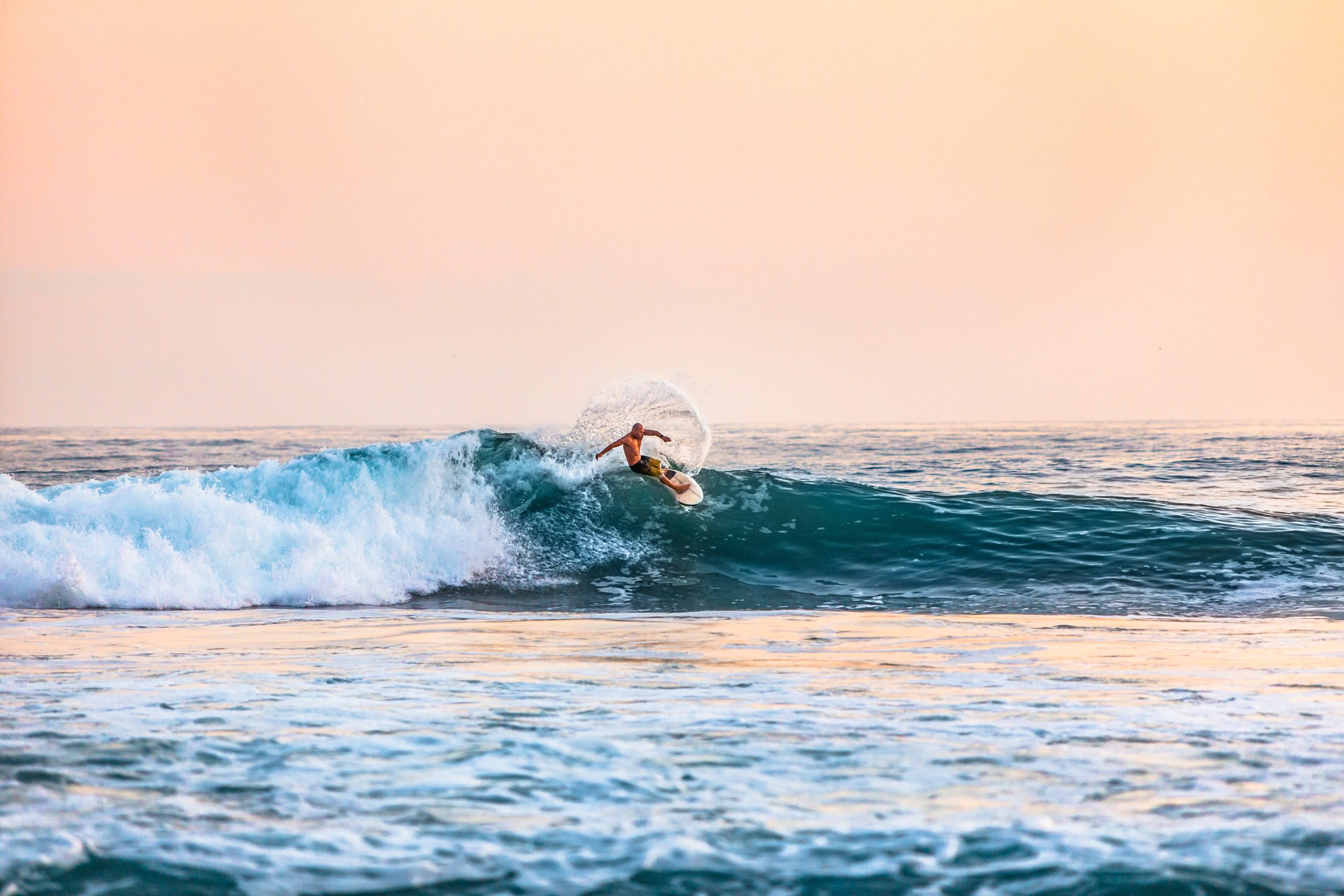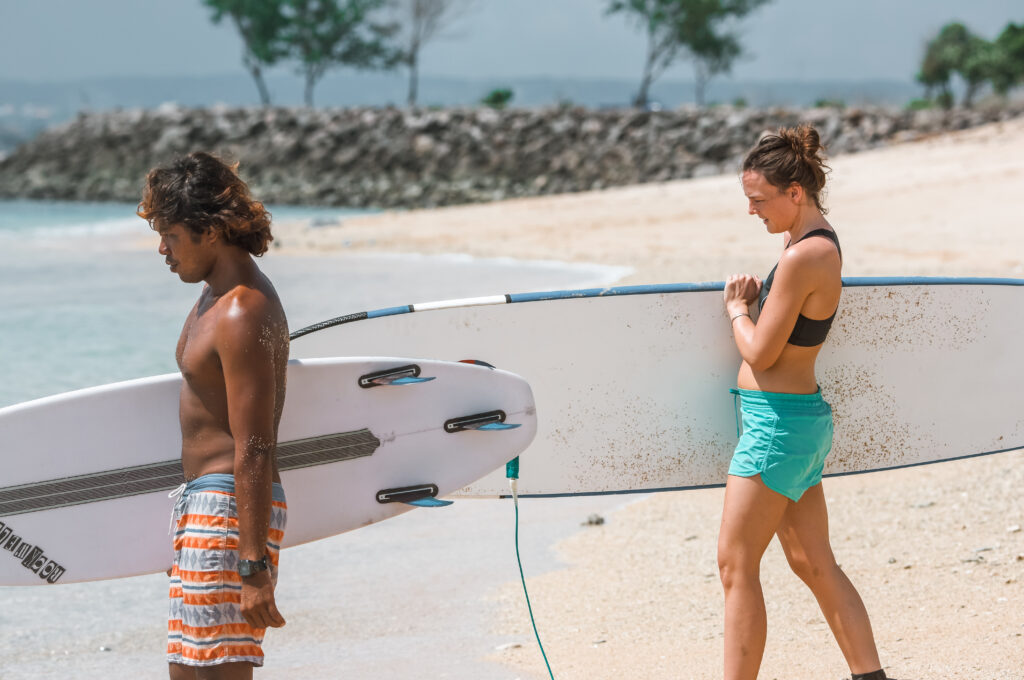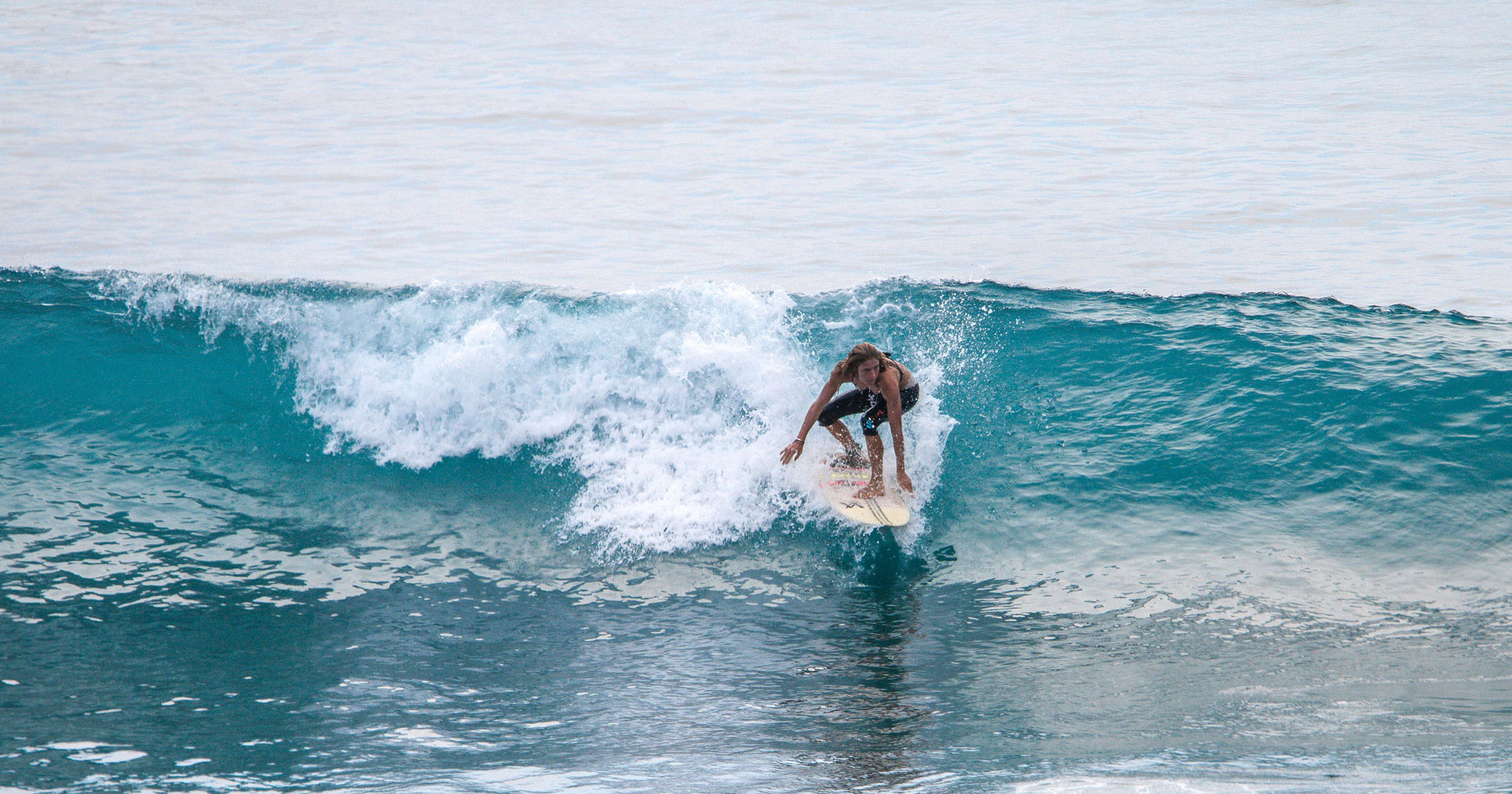
1. Freestyle Swimming
Much of any surfing session involves catching the wave: swimming, breaking through white water, positioning yourself before unbroken waves, and making a dash to match the wave’s speed. What follows is around one minute of actual surfing, if you’re lucky.
The surfboard may make it easier to glide across the surface of the water with little resistance, but you still need to build up speed and agility in the water to increase your success rate of catching a wave. Freestyle swimming increases your arm, chest and shoulder strength and, very importantly, your endurance. For starters, a 20-minute swim, 2-3 times a week and a 10-minute warm-up swim before surfing, will do you wonders.
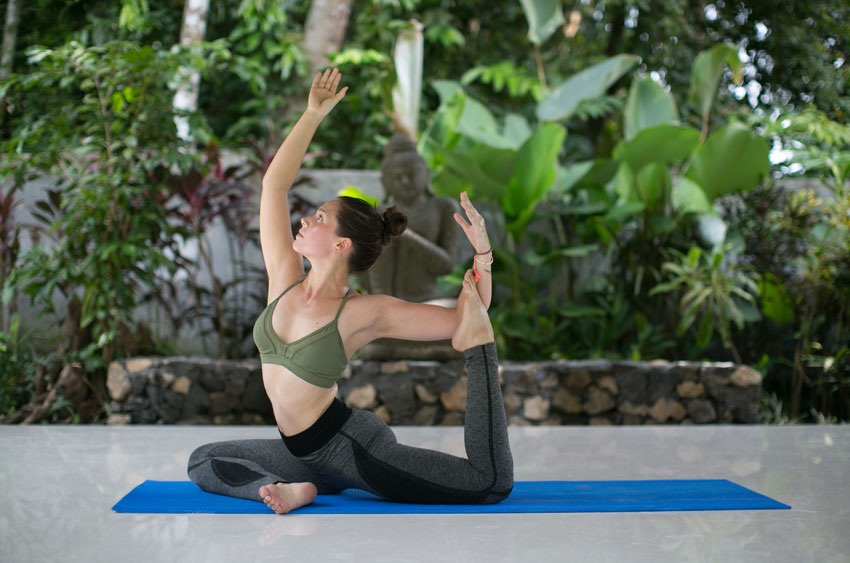
2. Yoga
Back on land, you might be surprised that yoga complements surfing. In fact, the world’s best surfers practice yoga regularly, as a serious workout. Stretching and holding specific poses challenge the surfing muscle groups to increase endurance and flexibility, in addition to gaining a sense of balance. Try the Squat, Boat, and Eagle Pose to get started, and you’ll soon know why.
Yoga is a unique exercise because unlike others, it trains flexibility and balance – it teaches you how to be aware of your own body position and make concise movements to switch to another position without breaking your balance. Sounds familiar? Think of the pop-up and standing position.

3. Planking
You might think that planking is used for the pop-up and take-off just before you ride the wave, but it does more than that. When you paddle you are also using your core muscles, which will slightly ache around the lower back region along your spine. To train this group of muscles, we suggest you do this exercise – if your yoga session does not include it.
Hold the plank position in the proper form for 20 to 30 seconds. Do not collapse the lower back, and form a straight line along your spine which extends towards your neck – and no head dropping! Breathe naturally even though you might be tempted to hold your breath under this strenuous position.
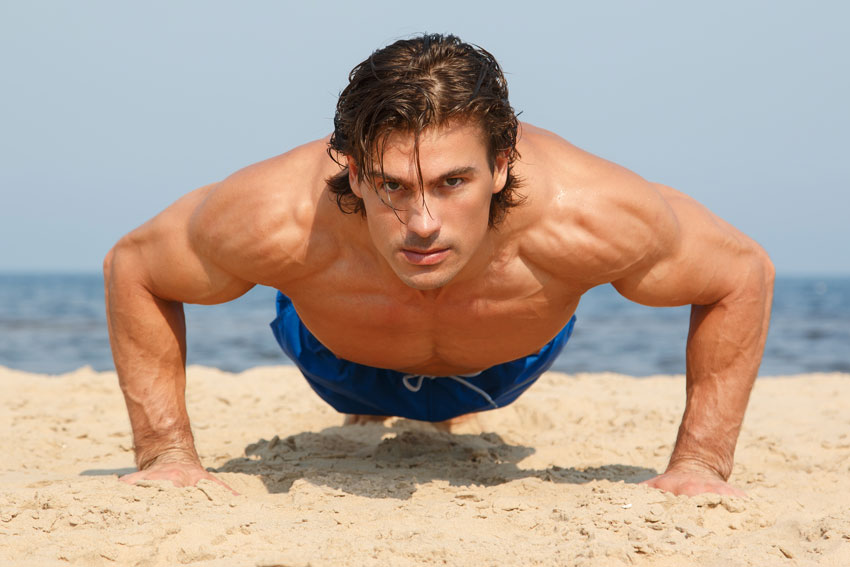
4. Push-ups and Squats
The classic push-up helps strengthen your triceps and chest, which are (again) crucial for mobility in the water. Apart from doing a few sets of 10 push-ups, try doing the clap push up to increase your arm’s power and speed. This is necessary if you want to match the speed of the incoming wave.
Squats help you develop better balance and core strength, but especially leg strength. Sloppy surfing is caused by weak legs (don’t skip leg day!) and bad foot/body positioning. Squats are important because if you look at surfers, you notice that they ‘stand’ on their boards in an almost squat-like pose. If you want to ride better, learn to retain a strong athletic pose. This will help you advance to an expert level quickly.
Find like-minded people at Pelan Pelan Bali, a family surf camp and yoga retreat in Canggu. We strip the concept of the resort down to its bare essentials: relaxation and appreciation for natural beauty. It’s simple, flexible and fun to stay at. Learn to surf in Bali with our friendly local instructors, or if you’d like to ride the waves unsupervised, rent out one of our motorbikes and explore the western coastlines to find your ideal spot.



